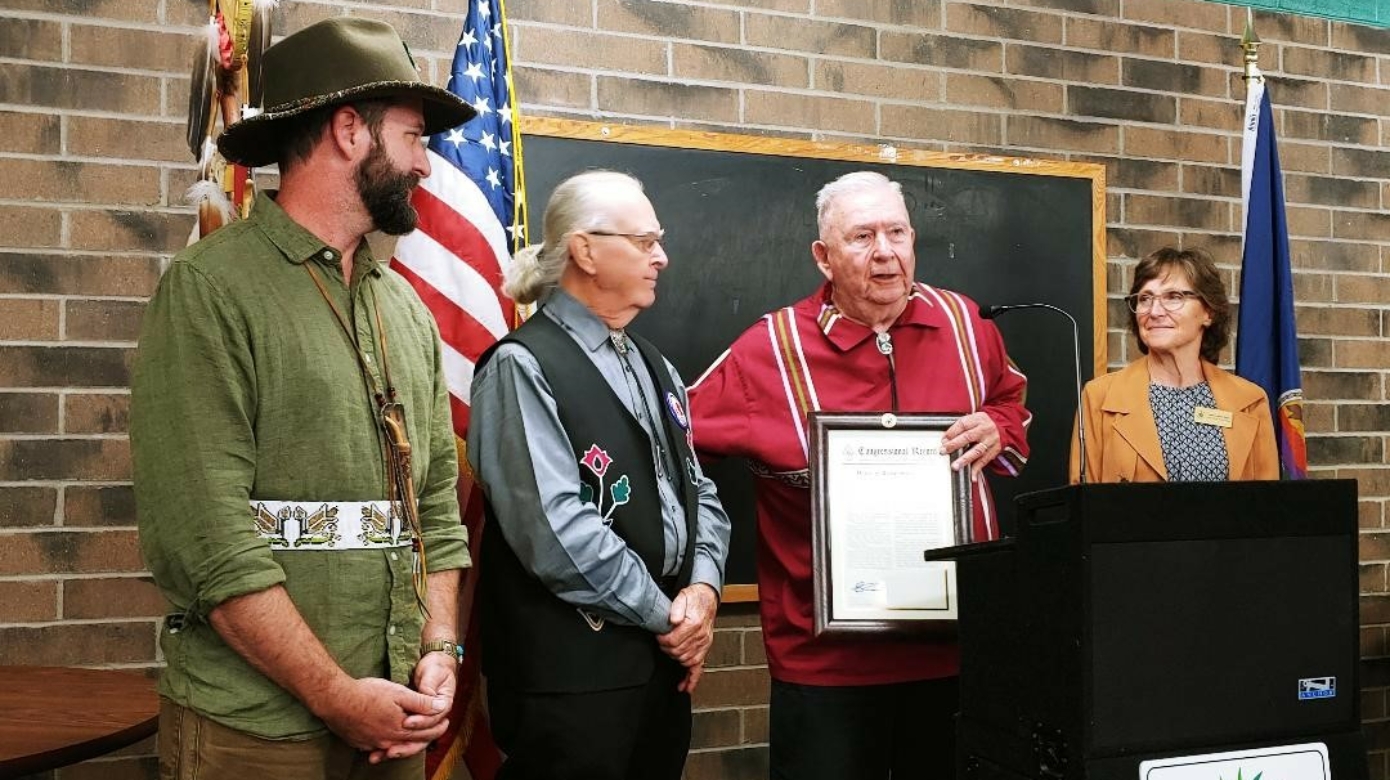A Citizen Potawatomi Nation tribal legislator reflected on his experience during the recent Potawatomi Trail of Death caravan.
Alan Melot, who lives in Joplin, Missouri, joined the group at a caravan stop in Olathe, Kansas, and continued to the caravan’s conclusion in Sugar Creek, Kansas.
Like many Tribal members, Melot is familiar with the history, but it was his first time to join the caravan. He plans to experience the entire trip, some 660 miles, when the caravan travels again in 2028.
Connections with history
“Going into Sugar Creek was solemn. We’re connecting with these historic things and some of the heavier experiences that we’ve had as a Nation, as a people,” he said. “It’s powerful to be able to go back and visit the same place that my ancestors were nearly 150 years ago.”
Melot said he thought of his Potawatomi ancestors and tried to understand how they must have felt.
“Being there in Sugar Creek, (I knew) that they were there for the better part of a decade, without having (the promised) support, being lied to by the government, having discord with people who are already there in the area, (people) who had also been displaced and removed.”
A licensed therapist, Melot said the experience even left him searching for the right words to describe it. He felt several emotional highs and lows.
“Life is difficult. Hardship and suffering are the things that unite us as humans. To be in a place where the people are experiencing such hardship, such suffering and disconnection from their ways of life” was moving, he said.
Since the area around the former Sugar Creek reservation is still rural and undeveloped, Melot was able to imagine what must have awaited his ancestors.
“Being able to feel the depth of that hardship and connect with it in a way that’s real, that you can look around and know (they) must have said, ‘Wow, we’ve got to scratch a living out of this.’ There was something profound and deep about that connection,” he said.
Melot said he deeply appreciates how far the Citizen Potawatomi Nation has come. When the Potawatomi survivors of the Trail of Death finally arrived in Sugar Creek, Kansas, their primary focus was on survival. Today, the Nation is prosperous and has an optimistic outlook. Melot believes his ancestors would be equally as proud of their descendants.
Planning for the future
In the past, some caravan participants have chosen to travel the entire 660-mile distance. Others have joined the group at different stages. Each participant may decide which method suits them best, Melot said.
As many of the Trail of Death Association leaders are now elders, Melot said the younger members of the group will have to take all they’ve learned so the event may continue to serve future generations.
“I feel like the next one is going to have a different flavor. The association leaders are aging; I am hopeful that (they) will still be able to participate, but I know that there’s a point where you just don’t have the energy to do the planning side,” he said. “I feel like we are in a time of transition now where we’ve got quite a few people who are younger stepping into positions of leadership. It’s a grassroots organization, and I just love that.”
Melot said the younger Tribal members are grateful for what their elders have accomplished and feel the weight of carrying the legacy forward. From planning the accommodations, viewing sites of special significance, to working with local citizens and governments to place historical markers along the route, he’s grateful for everything the Trail of Death Association has done.
In Fulton County, Indiana, alone, there are 80 historical markers, designating Trail of Death campsites every 15 to 20 miles, according to the Fulton County Historical Society. Efforts to add more markers in additional states continue.
“There’s been so much heavy lifting already done. There are so many markers along the trail. I feel like it’s a real gift to be handed to us,” Melot said.
Life changing experience
He was happy to see young children on the trip as well. Melot hopes more parents will consider including their children in the next caravan.
“Then that becomes part of your history, that is part of your legacy, when you are able to experience it as a kid,” Melot said.
He compared traveling in the caravan to visiting a boarding school that his great-grandfather attended. Both were meaningful experiences, but with very different emotions.
“Walking around (the school), the place just felt evil to me, and it made me so mad. We’ve read about boarding schools and children being taken away from parents. But that changed from being an academic thing that we read about,” he said. “On the Trail of Death, I got none of the anger, which kind of surprised me because it was a catastrophic displacement for our people. (Being there) just evokes such a different experience. I just felt deeply connected.”
For more information, visit the Trail of Death Association website at potawatomi-tda.org.

